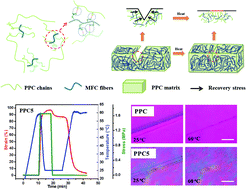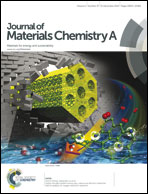Microfibrillated cellulose-reinforced bio-based poly(propylene carbonate) with dual shape memory and self-healing properties
Abstract
A novel, biologically friendly polymer with shape memory and self-healing properties based on poly(propylene carbonate) (PPC)/microfibrillated cellulose (MFC) was prepared. MFC was first modified by a one-step mechanical–chemical approach involving ball milling and esterification reaction. In this way, MFC could be incorporated into PPC at up to 20 wt% with excellent dispersion. The formation of the “MFC network” structure in the PPC matrix was verified by scanning electron microscopy, and the strong interfacial interaction between PPC and MFC was confirmed by X-ray photoelectron spectroscopy. The incorporation of MFC not only significantly enhanced the mechanical strength and thermal stability of the polymer, but also acted as a physical cross-linker that could improve the shape memory property of PPC at specific contents (5–10 wt%). More importantly, due to the shape memory effect and the reinforcement of MFC fibres, the polymer composites also showed enhanced scratch resistance and scratch self-healing behaviour. Our work provides an approach to tune the shape memory behaviours of polymer composites and may contribute to the application of PPC in the field of smart materials.


 Please wait while we load your content...
Please wait while we load your content...